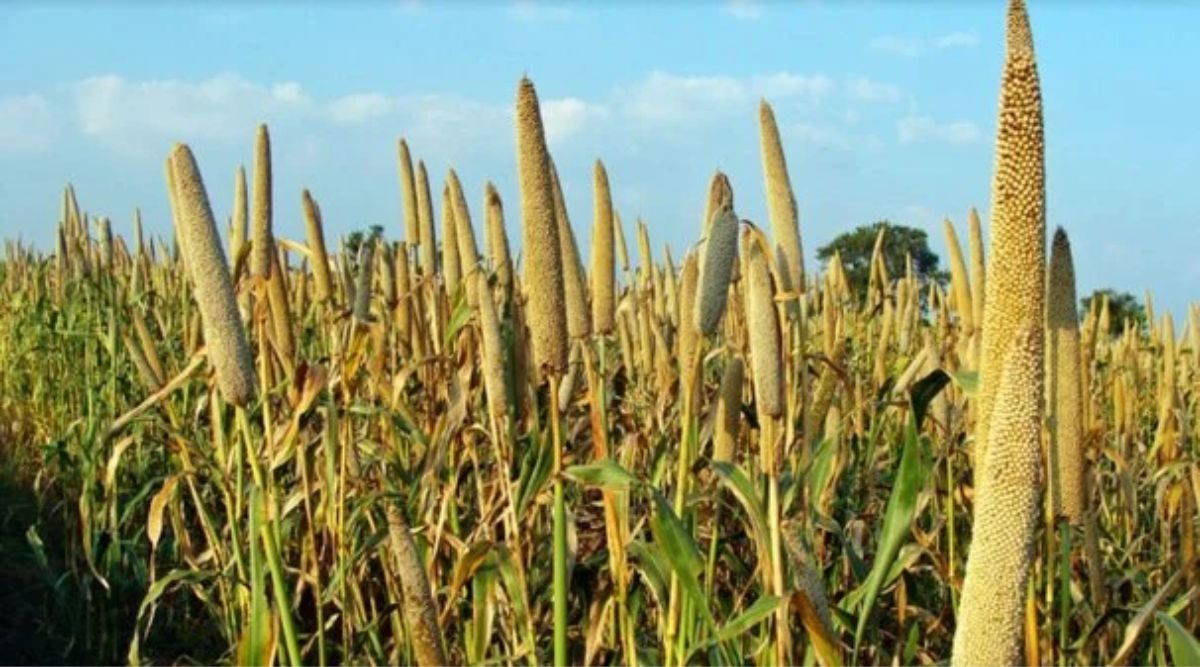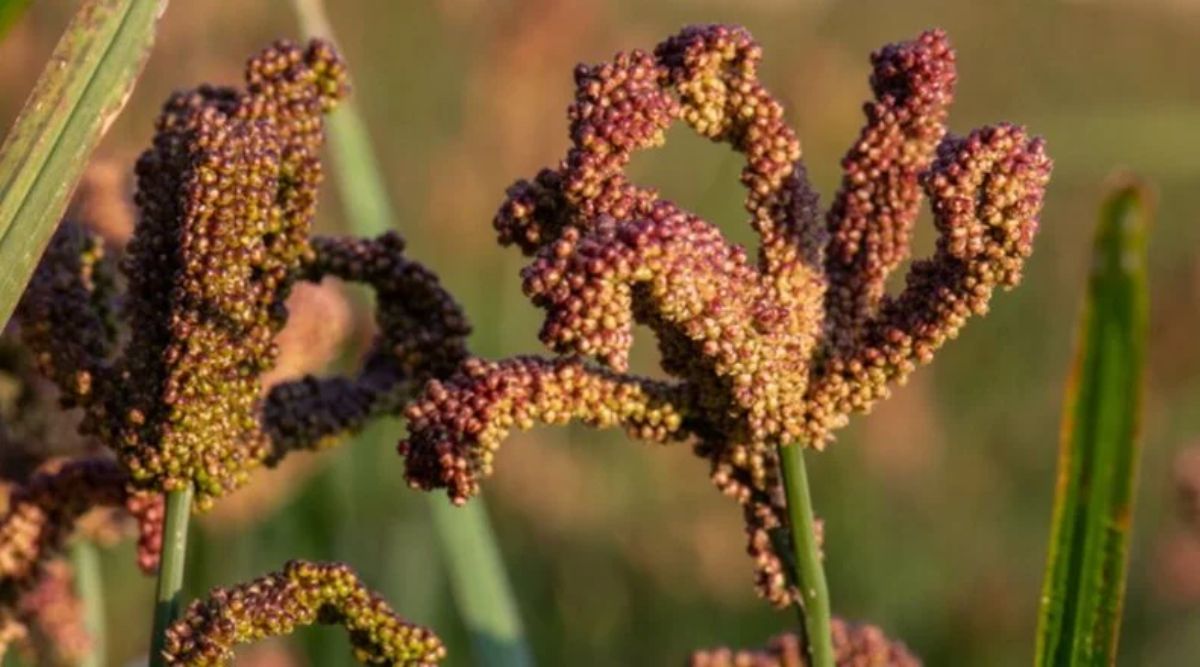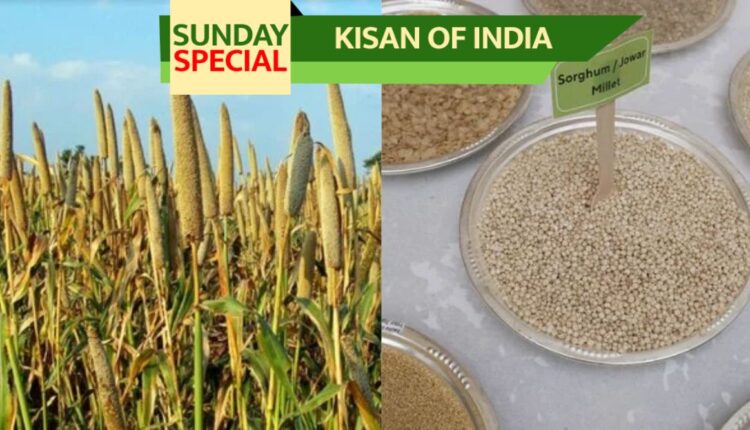‘Nutritious Grain Year 2023’: Increase intake of millets
Farmers do not have to struggle much in the cultivation of low-cost coarse grains like millet, ragi, barley, kodo, jowar, sawa, oats, kutki, kangni etc.
‘Nutritious Grain Year 2023’ – The victims of malnutrition are not only the poor, but there are also people from the rich countries of the world, whose food does not have the balance of nutritious elements. This is the reason why diseases arising out of lack of nutritious food are being faced by people of developed countries as well as poor and developing countries. That’s why now the attention of the whole world is once again on bringing those forgotten coarse grains i.e. Millets to the plate, which after the Green Revolution went away from our diet due to the prevailing social concepts.
Millets, highly nutritious cereals like Bajra, Jowar, Sawa, Kutki, Ragi, Kodo, Chena and Kangni, are believed to have existed since the Stone Age. Many varieties of it have also been found from Mohen-Jodado and Harappa period archaeological places. In Indian, Chinese and Korean food culture, millets are considered a grain older than rice. About 6,000 varieties of metals are found in the world. But due to the Green Revolution, there was a revolutionary change in the production of wheat, rice and maize etc. and in no time, the concept of linking the consumption of millets with the economic status of the people started flourishing in the society and nutritious grains were called ‘coarse grains’.
Why did the prevalence of coarse grains decrease?
Before the Green Revolution, traditional dishes prepared from coarse grains were very popular in the daily diet of the rural families of the country. Compared to wheat, rice and maize etc., the cultivation of conventional millets is easy and at low cost. It does not require more fertile soil and more water for irrigation. But as a result of the Green Revolution, as the availability of wheat and rice increased, it was seen as the grain of economically prosperous people. Because of this, the demand and production of coarse grains kept falling year after year.

Also Read: Kair Farming: Grows even in barren land
The quality of being drought resistant is also found in most of the millets. That’s why metals have been playing the role of a major source of energy and protein for millions of people living in unirrigated areas. The price of coarse grains is also less as compared to wheat and rice. That’s why the consumption of coarse grains went on being limited to the poor and due to the neglect of a balanced diet, the effect of lack of nutritious grains on the health of the people eating and drinking became widely visible.
Cultivation of coarse grains is easy and the cost is also less
Compared to new age cereals like wheat and rice, cultivation of millets or millets is done easily and at low cost. Still the traditional millets continued to be neglected. Compared to wheat, rice and maize, millets are more nutritious and digestible. That’s why millets, which have disappeared from our everyday plate in the past decades, are the most cooked and eaten in India as fruit during fasting. This is not because of any elitist hobby but because of the abundance of nutrients found in millets.
Also Read: Giloy cultivation is a big source of good income for farmers
Coarse grains are also called nutritious grains because the quantity of all healthy and essential nutrients including magnesium, calcium, iron, phosphorus, vitamin ‘B’ is found in them much more than grains like wheat and rice. That is why the United Nations has declared the year 2023 as the ‘International Year of Nutritious Cereals’ to encourage the use of millets in food. For this, India’s proposal was supported by 72 countries.
Coarse grain production increased due to government incentives (‘Nutritious Grain Year 2023’)
Emphasis is being laid on increasing the demand of millets among the general public by propagating the qualities of millets through the events organized under the ‘International Year of Nutritious Grains’. In recent years, due to the encouragement of the Government of India, the farmers are once again interested in the cultivation of millets. That is why the yield of millets is also increasing. Apart from this, the trend towards products prepared from millets has also increased in the urban population.
‘Nutritious Grain Year 2023’ – The Indian Institute of Millets Research, Hyderabad (ICAR-Indian Institute of Millets Research) through the All India Coordinated Research Projects on Jowar and Bajra has developed several improved varieties of millets which are rich in nutrients and give high yields. In this connection, efforts are being made to popularize traditional and delicious dishes prepared from millets and many processed food products like biscuits, snacks etc. Keeping in view the unique qualities of millets, useful information has also been provided from time to time by the Farmers of India, so that millets can once again make their place in our staple grains.

Also Read: Drumstick Cultivation: Scientific methods gives fruits twice a year
Coarse grains are unique for both man and farm (‘Nutritious Grain Year 2023’)
The qualities of millets show that the grains which are good for our health are also good for the health of the farm. That’s why many farmers adopt millet cropping in mixed farming as it increases the biodiversity and nutrient stability in the field. If the fertility of the soil improves, then apart from productivity, the ability to fight against pests and diseases increases.
Millets are eco-friendly. Therefore, they are encouraged to be adopted as suitable crops in arid and semi-arid areas, supporting sustainable agriculture. In fact, even in ancient India, the staple food was not rice but millets, because they are rich in fibre, amino acids, vitamins and minerals, gluten-free, alkaline, non-allergic and digestible.
The low glycemic index of millets also makes them an ideal substitute for rice. Consumption of millets is also very useful in cholesterol, diabetes and weight loss. Explain that the ‘glycemic index’ is a scale that tells how much the carbohydrate of different grains increases the level of blood sugar in the body. This scale is not based on the quantity of carbohydrate but on its quality.
Nutritional value of millets to be considered in ‘Nutritious Grain Year 2023’
- Pearl Millet: Millet has been extensively grown and consumed in the African and Indian subcontinents since ancient times. Consumption of millet in winter increases warmth and energy in the body. It is rich in phosphorus which helps the cells to store energy and many other important minerals.
- Ragi, Nachni, Mandua, Mandika, Marwah (Finger Millet): Ragi is such a coarse grain in which maximum calcium is found. They grow easily even in dry areas. Ragi is also known as an anti-diabetic grain. Its high fibre content also prevents constipation, cholesterol and colon cancer.
Both bajra and ragi also contain substances called goitrogens, which inhibit the production of thyroid hormones. That’s why consuming them several times a day can increase the thyroid gland.
Also Read: Why is tissue culture technique effective in potato seed production?
- Kangni, Kukum, Rala (Foxtail Millet): Kangni is considered to be the oldest millet. Its origin is northern China. There it has the status of a grain to improve digestion and after delivery. Iron and other minerals are abundant in cornice. In India, it is very popular as a food for fasting.
- Kodo, Koden, Kodra, Araka (Kodo Millet): Like all varieties of millets, Kodo has also been consumed for thousands of years. It has a high amount of lecithin which is excellent for strengthening the nervous system. Kodo is rich in vitamins B, B6, niacin, folic acid and minerals like calcium, iron, potassium, magnesium and zinc.
- Kutki, Samai, Shawan (Little Millet): Kutki is the smallest grain in the millets family. This is a crop grown all over India. Cook and eat it like rice. If iron-rich kutki is eaten instead of rice, it is very beneficial for anaemia patients.
- Jhungora, Sawa, Sovon (Barnyard Millet): Sovon is such a millet in which fibre and iron elements are found the most. Carbohydrate is very less in it. It is also a good source of Vitamin B-complex.
- Sorghum: Sorghum is widely cultivated and consumed in many states of India. Its breads are very easy to digest. It is rich in potassium, phosphorus, calcium, iron and zinc.
- Baragu or Varagu (Proso Millet): Baragu or Varagu has the same high quality protein as wheat. It is also rich in essential amino acids (leucine, isoleucine and methionine) and gluten-free. It is also considered as old and tasty grain as Kangni.
How to increase the intake of millets with ‘Nutritious Grain Year 2023’?
One need not compromise or give up on one’s favourite dishes to increase the presence of millets in one’s diet. If we replace only one or two of our grains with millets, we will start getting more tasty, balanced and nutritious food. For example, replace rice with millets in your one-time meal and feel the difference. It can also be started by mixing millets and rice half-and-half. Instead of rice, use millets and lots of vegetables in the casserole. Prepare dishes of millets with sugar or jaggery. You can try millets instead of oats or oats for breakfast.
Contact us – If farmers want to share any valuable information or experiences related to farming, they can connect with us via phone or whatsapp at 9599273766 or you can write to us at “[email protected]”. Through Kisan of India, we will convey your message to the people, because we believe that if the farmers are advanced then the country is happy.
You can connect with Kisan of India on Facebook, Twitter, and Whatsapp and Subscribe to our YouTube channel.



